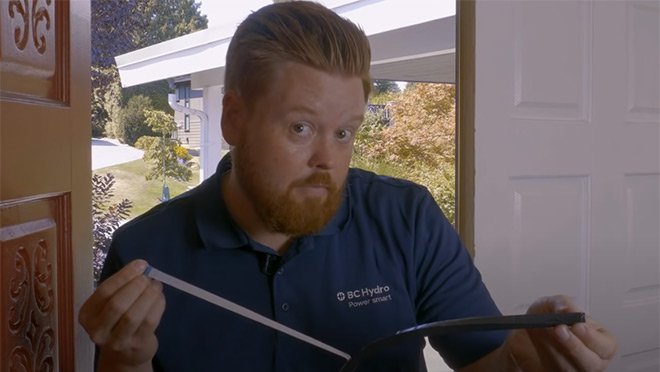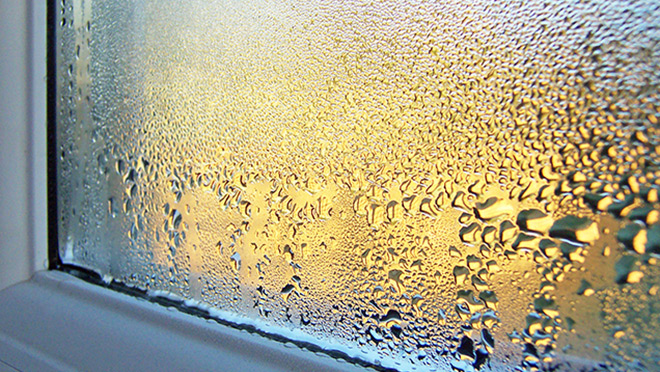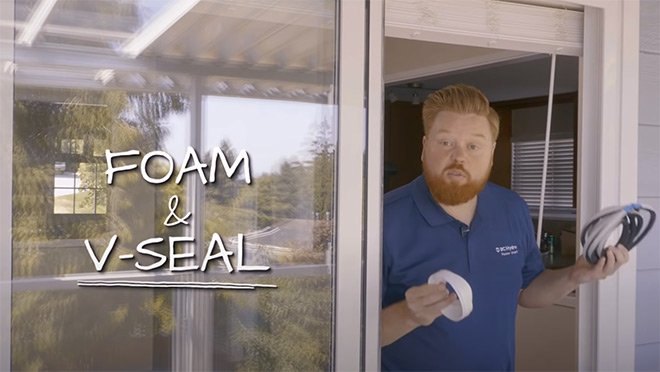Still have questions about draftproofing your home?

October seminar was a hit, and questions keep rolling in
We're blown away by the response. Nearly 500 Team Power Smart members took time out of their Wednesday evening on October 27 to attend what we hope will be only the first of a series of virtual Ask an Expert events. This one zeroed in on draftproofing, which is one of the most cost-efficient ways to add comfort to your home while also reducing heating costs.
Central to the session was energy manager Vern Douglas, a certified energy manager who co-owns Surrey-based, It's On Electric. But even a guy with a wealth of experience couldn't possibly get to all the questions submitted in a 30-minute window. So here we are with a promised follow-up that aims to provide answers to some of the big questions we couldn't get to in that half hour.
Note that while we tried to answer as many member questions as possible, some questions were too specific to be addressed here. If you have a question specific to your home, you might try contacting a draftproofing professional – or a CleanBC energy coach – for help.
What are the pros and cons of using insulating window film?
If window films, like movies, were subjected to a Rotten Tomatoes rating for popularity, they might earn a barely fresh rating of say, 59 out of 100. The reason? People have a love-hate relationship with them. Those who don't mind the fact that they can't quite see as clearly out a window with a plastic film barrier on the inside, and don't mind that the film prevents them from opening that window, will tell you that the comfort upgrade – and the savings – can be enormous.
For less than $30, you can get an insulating window film kit that's easy to install. All you need is a little patience and a hair dryer. And especially if you have single-pane or older windows, you should notice the comfort upgrade immediately. And when you check MyHydro after a few weeks of cold weather, you should see the savings in your electricity bill.
Based on member questions about window film, here are a few things you should know:
- Cleaning window film: While window film is generally more resistant to dirt and dust than glass, you may occasionally need to carefully clean it. Refer to cleaning instructions for the specific window film you're using, such as these instructions from 3M.
- Buying the right film: Check to see if the film kit you have your eye on is an insulation film kit. While window tints and other sun-blocking films can be really helpful in the warmer months, you'll want a film that's primarily there for insulation in cold weather.
- Removing the film/residue: If you've applied the kit's adhesive tape to older paint on your window frame, you may peel off some of that paint when you remove your window film. Applying a fresh coat of paint a month or more before applying the window film is the best way to avoid this. Otherwise, scrub off any stuck pieces of tape or glue with a warm-water soaked rag, by rubbing oil on the tape or – if you must – using a razor blade to remove stuck pieces.

What should you do, and not do, when you have condensation on windows?
Those water droplets on windows aren't just messy to clean up, they can do a lot of damage to your window frames and can be a sign of bad things to come, including mould around windows or along the corners and ceilings of your rooms. This isn't always a sign that you have a really drafty place.
The average family produces about 10 litres (2.6 gallons) of moisture a day through simple, everyday activities such as breathing, cooking, washing dishes, washing clothes and taking baths or showers. This moisture in the air of your home turns into condensation when it comes into contact with a surface or object that's cold enough to chill it below what's called the "dew point." That's when the invisible vapour becomes visible droplets of water.
- Wiping windows isn't enough: Resist the temptation to just live with the problem. You need to lower the humidity in your home to fix it. The best place to start is to check for sources of humidity, such as water leaks and damp spots in your home and always use the fan above your stove while cooking and the bathroom fan while showering or bathing.
- How to use fans: Ideally, you have an energy-efficient bathroom or kitchen fan that works either on a timer or turns on and off according to a dehumidistat setting. At certain times of the year, you'll want to use your fans a lot, especially during and after showering, when you're cooking with large appliances, or when hang-drying laundry indoors. Note that so long as the towels in your bathroom are still wet, they'll add humidity to the air and you may need to leave the fan on.
- Get a quiet fan: If it's time to get a new fan, spend the extra bucks to get one that's quiet. Look for a fan with a "sone" rating of 1.0 or less, and preferably .3, .2, or even .1. Learn more about buying and using fans.
- Opening windows is not the answer: We've heard from Team Power Smart members that their stratas have told them to either open windows or ensure an entry door isn't fully sealed, as a means of dealing with condensation. But If your aim is home comfort and energy savings, opening windows or allowing leaks around doors to prevent condensation is counterproductive. Use your fans strategically and regularly, and look for sources of moisture.
- Window upgrades can help: Better quality windows are going to be less prone to condensation, especially if you're in an older home with either single-pane windows and/or aluminum frame windows. BC Hydro's Home Renovation Rebate Program include rebates of up to $100 for each window and door replaced with qualifying products.
- The cause of condensation isn't too much insulation: We got a question about whether excessive insulation could be the cause of condensation. The cause is indoor humidity, something you can help control with strategic use of fans. If you're upgrading insulation, check BC Building Code insulation guidelines by zone: North Vancouver Island and Interior [PDF], Lower Mainland and Southern Vancouver Island [PDF], and The North.

I've struggled to get exterior doors and windows fully sealed. What should I do?
If you've tried to draftproof a door, but the gaps are too big, it's probably time to replace the door. Take advantage of BC Hydro’s Home Renovation Rebate Program’s door and window rebates to ensure you save up to $100 on a quality product.
See our helpful draftproofing tips and videos that cover foam weatherstripping, V-seal weatherstripping, window insulator film, and outlet insulator pads.
How to you stop drafts from fireplaces and basements?
Check your fireplace's damper periodically to ensure it can close tightly and is in good working order. Close the damper tightly when the fireplace isn't in use.
If you don't use your fireplace, seal the damper tightly with weatherstripping and fill the chimney with insulation. Remember to remove the insulation if you decide to use the fireplace again.
If you're getting a lot of drafts from your basement, first take steps to draftproof the space by plugging leaks in windows and doors, then consider an insulation upgrade. BC Hydro offers up to $1,200 in rebates for upgrading your home’s basement insulation.
Related:
